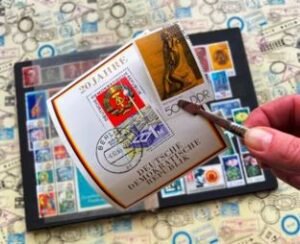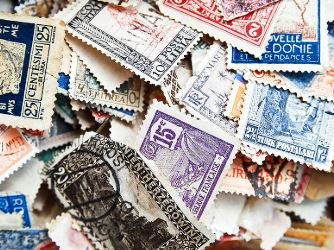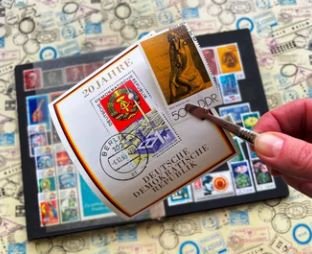Stamp collecting is an exciting and rewarding hobby, but for new stamp collectors, it can also feel overwhelming. Whether you’re just starting or looking to deepen your knowledge of philately, the journey to building a successful collection requires some basic principles. Understanding what to do—and what to avoid—will ensure you have a more enjoyable and fruitful experience. Here are five top tips for new stamp collectors: essential advice for success and mistakes to avoid.

1. Start Small and Focus on Your Interests
As a new stamp collector, it’s tempting to buy everything in sight. However, one of the biggest mistakes new stamp collectors make is trying to collect too many types of stamps at once. The key to building a strong collection is to start small and focus on a specific theme or country. This helps narrow down your search, making it easier to manage your collection while deepening your knowledge of the stamps you’re collecting.
Mistake to avoid: Many new stamp collectors mistakenly try to gather stamps from all over the world without a clear focus. This can lead to a disorganized collection and cause frustration as you struggle to find valuable or meaningful stamps. Instead, pick a theme that excites you—such as historical stamps, animals, or stamps from a particular country—and stick with it for a while. This will give your collection direction and make the process of collecting more enjoyable.
2. Learn the Basics of Stamp Grading
One of the most important aspects of stamp collecting is understanding how to assess the condition and value of stamps. New stamp collectors often overlook this step, only to realize later that they’ve purchased stamps in poor condition, which can affect their value. Grading stamps involves evaluating their condition based on factors like centering, gum condition, perforations, and color. Learning about stamp grading will help you determine whether a stamp is worth adding to your collection.
Mistake to avoid: New stamp collectors frequently fall into the trap of purchasing stamps without checking their condition properly. A stamp might look appealing at first glance, but subtle defects can significantly reduce its value. Before buying any stamp, educate yourself on stamp grading. It’s also a good idea to consult a stamp expert or refer to specialized catalogs to get an accurate assessment.
3. Protect Your Stamps with Proper Storage
Storage is a crucial aspect of stamp collecting. Improper handling and storage can cause stamps to become damaged or degraded over time. New stamp collectors should invest in quality storage materials such as acid-free albums, protective sleeves, and mounts. These tools protect your stamps from moisture, light, and physical damage, ensuring they remain in pristine condition for years to come.
Mistake to avoid: A common mistake new stamp collectors make is storing their stamps in non-archival materials like regular photo albums or plastic bags. These materials can contain acids that damage the stamps over time, leading to fading and deterioration. Always opt for storage materials that are specifically designed for stamp protection to preserve the longevity and quality of your collection.

4. Join a Stamp Collecting Community
Stamp collecting can be a solitary hobby, but it doesn’t have to be. One of the best ways to enhance your experience as a new stamp collector is to join a community of like-minded individuals. Whether through online forums, local clubs, or stamp shows, connecting with other collectors will give you access to valuable resources, tips, and even potential trade opportunities. Experienced collectors are often more than willing to share their knowledge and offer advice on how to build and care for your collection.
Mistake to avoid: New stamp collectors sometimes attempt to learn everything on their own, missing out on the wealth of information and support available in the philatelic community. Without the guidance of fellow collectors, it’s easy to make avoidable mistakes or spend more money than necessary. By joining a stamp collecting group, you’ll gain insights that will help you avoid costly errors and accelerate your growth as a collector.
5. Research and Set a Budget
Stamp collecting is a hobby that can be both inexpensive and expensive, depending on how you approach it. New stamp collectors often make the mistake of overspending on stamps before truly understanding their value or rarity. It’s important to research stamps thoroughly before purchasing and set a clear budget to prevent impulse buying.
Mistake to avoid: Many new stamp collectors are drawn to rare or expensive stamps, thinking they will increase the value of their collection. However, without proper research, it’s easy to overpay for stamps or buy ones that are not as rare as they seem. To avoid this mistake, take the time to research stamps in catalogs, price guides, or online resources to ensure you’re not making unnecessary purchases. Setting a budget will also help you manage your spending and keep your collection focused.

he first postage stamp, the “Penny Black,” was introduced in the United Kingdom in 1840. It revolutionized the way people communicated across distances. Before stamps, the cost of sending a letter was often prohibitive, and the sender typically bore the financial burden more.
Conclusion: Enjoy the Journey
Stamp collecting is a rewarding hobby that combines history, art, and personal interest. By following these five top tips for new stamp collectors, you’ll be well on your way to building a successful collection. Remember, success in stamp collecting comes not only from acquiring valuable stamps but from enjoying the process of learning, discovering, and connecting with others. Avoiding common mistakes, focusing on what interests you, and staying organized will ensure that your collection grows into something meaningful and enjoyable.




